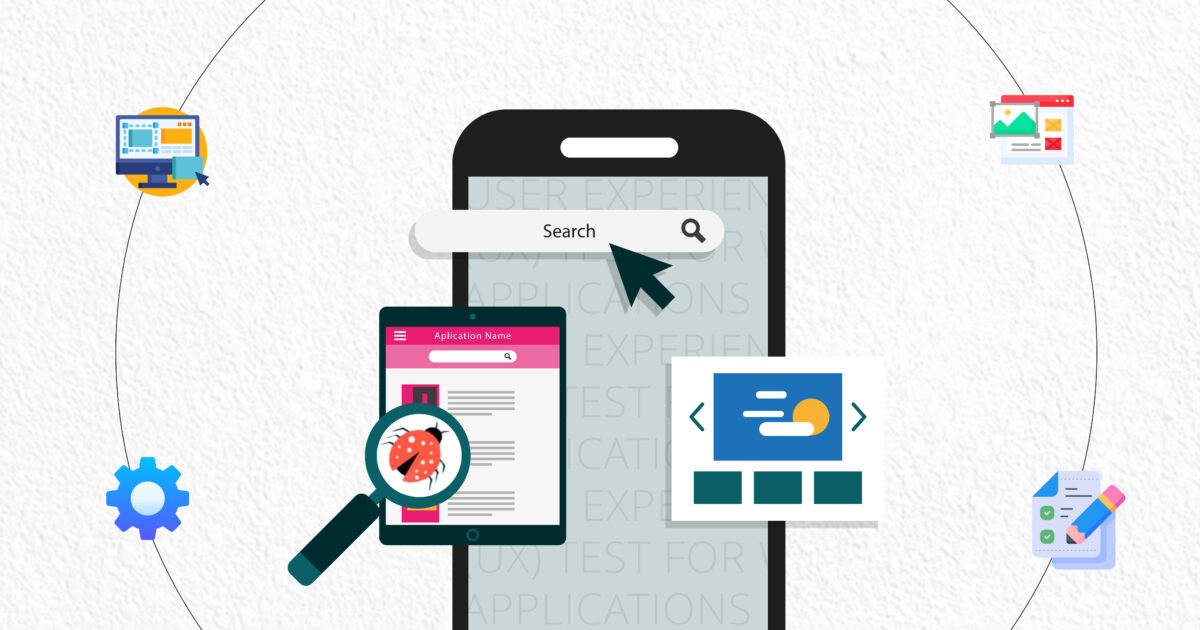UX testing is one of the major necessary steps of web development. It gives one the confidence to feel that your application is user-friendly, automated, and easy to use effectively. Testing performed by real users finds usability problems in your product for smooth interaction, which one can improve on. Here are some ways to run an effective user experience test on a web-based application.
- Outline Distinctive Goals for Your UX Test
Before any test, it is good to establish the objectives. Ask yourself the following questions:
- What is your goal for this test?
- Are you testing overall design, user navigation, or a specific feature?
- Are you looking for feedback on the flow of the user or the speed of interactions?
Clear goals Tune your testing to make sure you’re gathering relevant insights that drive improvement.
- Select the Appropriate Method of Testing
There are many UX testing methods, each to serve different purposes. The best method is to allocate out by your goals. Some common types include:
- Moderated vs. Unmoderated Testing: During a moderated test, there is a moderator who leads the user, whereas unmoderated testing involves allowing the users to perform the tasks themselves. Choose based on whether you want to interact with users during the test.
- In-person vs. Remote Testing: Remote testing would be easier on the users and could be accommodated for in global web applications, but it lacks exploring and observation of non-verbal interactions.
- Usability Testing: Performing tasks and then giving feedback concerning ease of use, navigation, and functionality.
- A/B Testing: Testing different versions of a webpage to comprehend which performs best in terms of conversion or user engagement.
- Surveys and Questionnaires: It shall help in getting subjective feedback from the users about their experience with the web application, including very specific aspects like design preference or ease of navigation.
- Select Participants Representative of Your Target Audience
Recruit participants who represent your brand. This way, the feedback you get will be from users of your product. If your web application has any specific demographic targeting, such as age, profession or interest, make sure you target those people. Also, take into consideration different levels of experience: maybe new recruit users use your application differently compared to more advanced users.
- Develop Realistic Scenarios
When designing tasks, make them natural and as closely related to a scenario in which your users use the application; for example, don’t instruct them to engage in some unreal activity that can feel irrelevant. Examples of this would include such tasks as follows:
- Create a purchase
- Create account
- Finding certain information.
- Filling out a form.
- Getting through a part.
The more such tasks resemble the real user’s behavior, the more valuable the feedback.
- Observe Users’ Behaviour
Observe keenly how users are interacting with your web application while the test is in process. Even if they manage to successfully complete a particular task, it might be due to the presence of usability issues that made them get confused over where to click or hesitate over performing a certain action.
Note:
- Where the user taps or clicks?
- Where the user is hesitating?
- Any feedback or complaints by users while interacting with the app?
- How long does it take them to complete each task?
- Not Only Focus on What Works
While it is good to point out what works for the users, always have a sharp eye for what doesn’t. Be keen on pain points that frustrate users or even make them quit the tasks.
These might be anything from slow page loading to inconvenient navigation elements. Usual things to look out for, the real usability issues, include things such as:
- Confusing navigation or interface design
- Inconsistent layout or design elements
- Unclear calls to action
- Forms or buttons that don’t work as expected
- Long loading times
- Encourage Honest Feedback
Encourage test participants to think out loud while they work their way through your website or app. A really valuable UX test isn’t just about quantitative data; it’s about learning how users feel using the experience and where the experience is falling short. Let them know there are no “right” or “wrong” answers and that their candid feedback is highly valued.
- Iterate Based on Results
After having run your test and gathered your insights from the UX test, use the information to make changes. This could mean adjusting design elements, layout, functionality, or adding helpful features. When these changes have been made, it is advisable that another round of testing be done to see whether the updates fix the problems.
- Test Regularly
UX testing is not a one-time activity. As your web application evolves, so do user expectations. Regular testing helps ensure continuous improvement and keeps the user experience top-notch as you roll out new features or updates.
Conclusion
Effective UX testing delivers a web application that the users will enjoy. Set clear goals and add realistic tasks with diverse participants; honest feedback will show where pain points lay to improve your app’s usability. You continuously test and create better versions of your product for more satisfied users and a web application that can definitely be a success.





